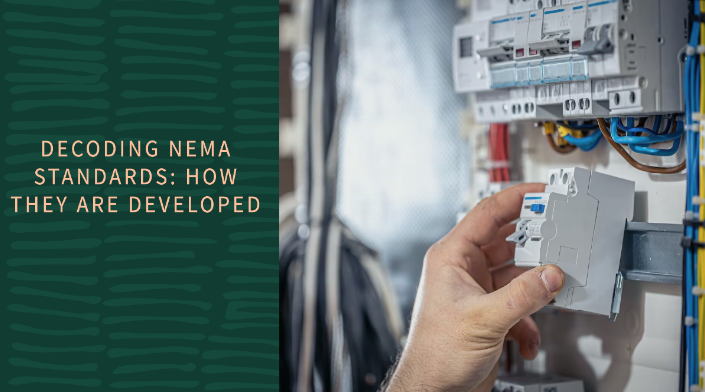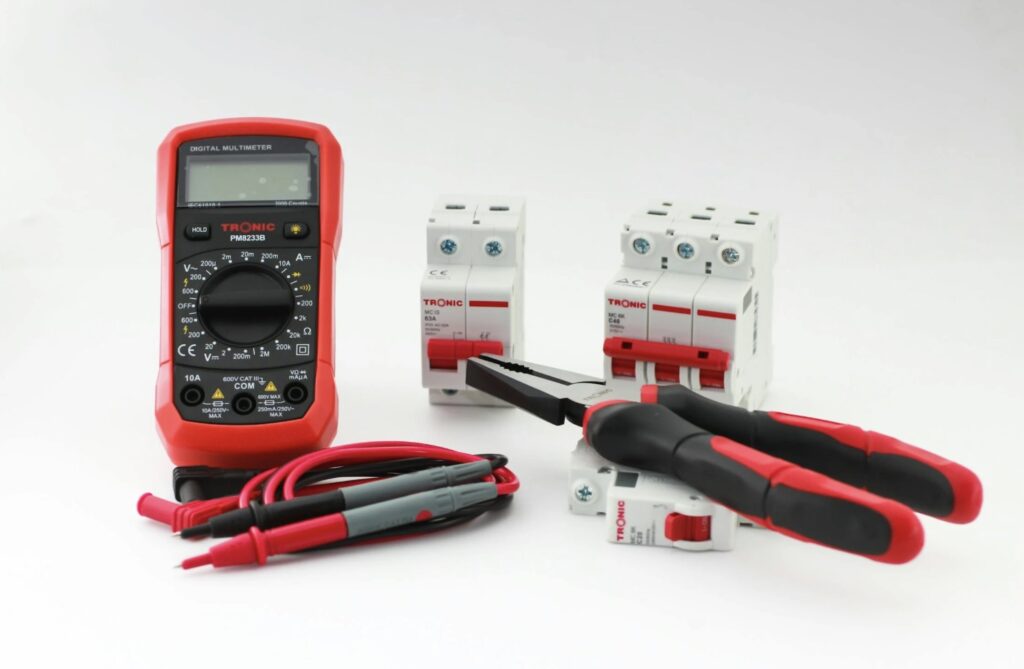Decoding NEMA Standards: How They Are Developed

A National Electrical Manufacturers Association (NEMA) Standard, in a nutshell, is a process, product, or procedure that alludes to the composition, nomenclature, construction, tolerances, or dimensions of certain electrical products, such as NEMA connectors. Other references include operating characteristics, safety, performance, testing, rating, and the service for which the item or items are designed.
Each Standard Boasts a specific date or number. To help you decode NEMA Standards, we delve more into this below, giving insight into how these Standards are developed. Read on to learn more.
The Process Behind the Development
The Standards development process comprises five simple steps, which we cover in more detail below:
1. The Commencement of the Project
Before project work can begin, the appointed authorized committee or NEMA section must issue their consent. This is by a simple majority vote. The section details the project start date and time via a Project Initiation Request form (PIR). The Engineering section records this as an entry in a Standards database. This initiates the Standard’s tracking progress.
2. Draft Development

The section stage of the Standard development process traditionally involves the section consigning the draft Standard’s development to a technical task forces committee or subcommittee. For Standards that have only just been initiated, a new task force or subcommittee can be pinpointed.
The technical committee or section assigns the chair. They then host a meeting with the sole aim of initiating a plan for work completion. Once the Standard’s outline has been created, the necessary work can be assigned to one or several Members.
Work associated with the Standard’s development procedure is accomplished between meetings. Again, this may be completed by a single Member or several Members. Fulfilled sections of the draft standard are developed and distributed amongst the whole group for analysis and comment. These comments are collectively discussed.
Once all comments are resolved, any necessary corrections or changes are applied to the draft of the Standard, which is distributed again. It’s common for the draft standard to undergo several changes in this part of the procedure. All group Members must agree before the draft can be assigned. Once ready and all agree, the full technical committee will receive the draft for analysis and comment. This is irrespective of whether this relates to a query on a power strip or NEMA Cords.
3. Comment Polling

As outlined in NEMA NS 1-2005, all Standards publications put forward must be listed in a uniform format. Before these are issued, the NEMA Counsel reviews the comment polls.
Votes from a voting class or section for a Standards bulletin are by letter ballot. Each showcases a response window of 30 days.
Member’s votes for letter ballots can be cast in the negative, the affirmative, or as a “no vote.” A Member of the NEMA council who manufactures heavy duty extension cords can vote on Standards relating to the product.
Within the 30-day window, any Member can alter a vote. The only time they can’t do so? If they waive the right to do so on the letter ballot. Similarly, when the 30 days are up, Members are not permitted to alter a vote issued by the letter ballot.
When issued to a voting class or section for consent, a Standard necessitates the consented vote of at least two-thirds of the votes. These can be either negative or affirmative. In the case of a letter ballot, the approval can commence at a voting class or section meeting. This will only take place if all Members are present.
Where comments accompany the votes, the suggested Standard and letter ballot result falls onto the technical committee or its pinpointed subcommittee within 30 days of the letter ballot’s completion. If the technical committee cannot fix negative comments, the proposed Standard is submitted to the Codes and Standards Committee (C&S) by the technical committee chairman.
This often results in oral presentations or written comments. These are issued by both sides of the party and assist in the overall review. This applies to all products, from flat extension cords to a 12 gauge extension cord. At any time, a member can alter or withdraw a comment. They can also update existing votes to affirmative votes.
4. Committee Approval of Codes and Standards

Approving, altering, confirming, or revoking the Standard means section and voting class actions are liable to approval from the C&S. In approving, disapproving, or deliberating NEMA Standards for electric devices such as rocker switch wiring, C&S considers only the majority vote. This must be submitted by letter ballot or at a physical meeting.
A proposed Standard review will involve C&S determining the following:
- The Standard must adhere to the NEMA standardization activity policies and comply with the procedures detailed in the NEMA bylaws and constitution.
- Consider all NEMA subdivisions affected.
- Suggestions surrounding compliance of the Standard with NEMA procedures and policies go to the NEMA Counsel.
- The Standard must be both accurately drawn and technically sound.
- Finally, the record submitted by the subdivision proposing the Standard must showcase the right amount of consideration for user requirements and safety.
Before approval, the C&S can refer to a product if the proposed Standard is of potential concern to other voting classes or sections. If a proposed Standard is referred, a 45-day grace period applies. If no reply is issued, C&S will often pinpoint that no objection or interest surrounds the proposed Standard.
5. Making Changes and Publication
Once C&S deems the Standard proposed approved, it goes to NEMA’s Communications department. This team is responsible for making edits to the document. These must be compliant with the NEMA Style Manual. Once complete, the Standard proposal goes to the staff responsible for final checks and approval. An editorial committee completes the final editorial review.
If the editorial committee requests alterations, the Communications department is responsible for carrying these out. The last step? The document is sent to the publisher to print and distribute.
The Bottom Line
Commissioned by the National Electrical Manufacturers Association, NEMA standards provide peace of mind for those investing in various electrical items.
Why?
These standards create a framework that is consistent for electrical devices and connectors. To meet application requirements? NEMA connectors are available in several sizes, shapes, and power capabilities.

